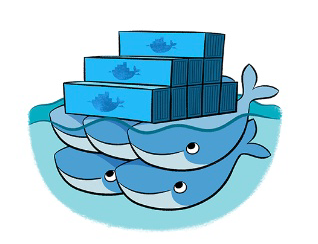Docker Releases ‘Production-Ready’ Net, Cluster Tools

The folks at Docker Inc. continue to push out new releases of their application container platform with the overriding goal of making key components "production-ready." The latest version, Docker 1.9, released this week focuses on multi-host networking that enables the creation of virtual networks in Docker Engine along with a "hardened" Docker Swarm clustering tool that moves from beta testing to production.
Those upgrades along with a new volume management system and expansion of the Docker Compose tool used to configure multi-container applications are intended as a foundation for scaling distributed applications in production.
Docker's multiple-host networking tool initially released for beta testing in June creates virtual networks in the core Docker Engine runtime that span multiple hosts. Application containers can then be attached to these networks regardless of host while allowing containers to communication with each other, Ben Firshman, a Docker software engineer, noted in a blog post.
San Francisco-based Docker said Tuesday (Nov. 3) that multi-host networking in Docker Engine in now generally available. Third-party networking drivers can also be plugged in without modifying applications. Docker said the first batch of network plug-ins for version 1.9 includes Cisco Systems, Microsoft, Midokura, Nuage, Project Calico, VMware and Weave.
Meanwhile, the Docker Swarm clustering tool has been "buckled down," Firshman noted, after completing benchmark scale testing to 1,000 nodes and 30,000 containers. Swarm also is designed to help determine the best host in a cluster for specific containers, and then assign the appropriate storage and networking resources.
The latest version also includes a new volume management capability within Docker Engine for storing persistent data regardless of where containers are hosted. Firshman stressed that the feature responds to developer struggles to store persistent data in distributed applications, one of several hurdles that have slowed the adoption of application containers in production.
The new volume management system is intended to make previously added volume plug-ins easier to use while managing persistent storage for stateful applications across entire clusters.
Taken together, Firshman asserted, the upgrades "establish the foundation for scaling [enterprise] distributed apps in production." The company estimates there are about 240,000 "Dockerized" applications currently in production.
To that end, Docker acquired applications services developer Tutum Inc. in October, touting the deal as enabling application containers to run on any infrastructure. The move also addresses lingering concerns about the slow deployment of application container technology in enterprise production environments.
Meanwhile, Docker has been releasing new versions of its application container platform about every three months.
A recently released survey on container adoption found that 93 percent of respondents are already using or plan to use application containers for development and production. Of those, 78 percent are opting for Docker containers.
While fast and relatively easy deployment of Docker containers was cited most often, 46 percent of respondents to the container survey conducted by application performance specialist Ruxit view "performance monitoring as a key challenge in the production environment."
Among "the big reasons for adopting containerization [are] that it allows you to migrate from clunky monolithic application architectures to lightweight, flexible microservices," the survey sponsor added. "Docker is perfect for encapsulating, shipping, and running small, scalable microservices across multiple hosts.
However, Ruix warned, "The 'self-driving' container infrastructure isn’t here yet."
Related
George Leopold has written about science and technology for more than 30 years, focusing on electronics and aerospace technology. He previously served as executive editor of Electronic Engineering Times. Leopold is the author of "Calculated Risk: The Supersonic Life and Times of Gus Grissom" (Purdue University Press, 2016).










